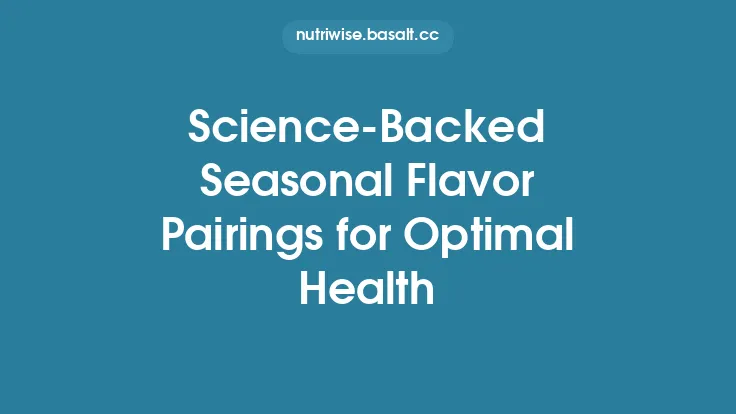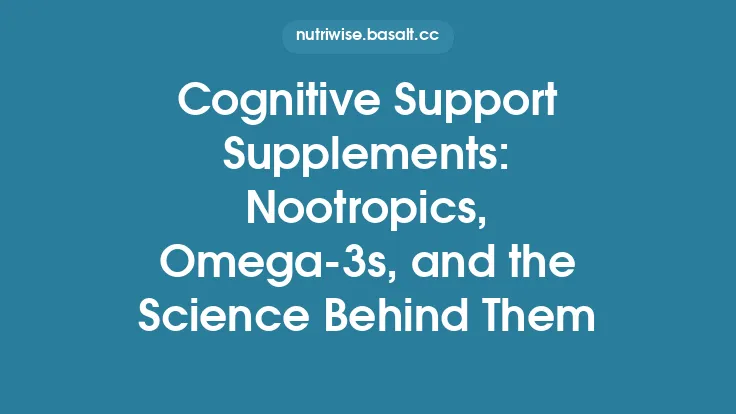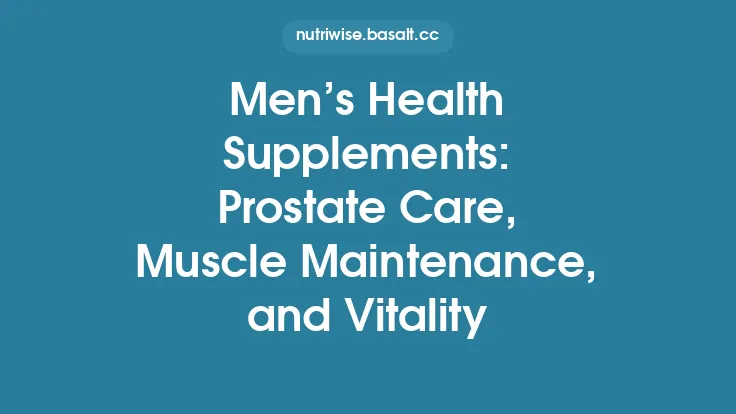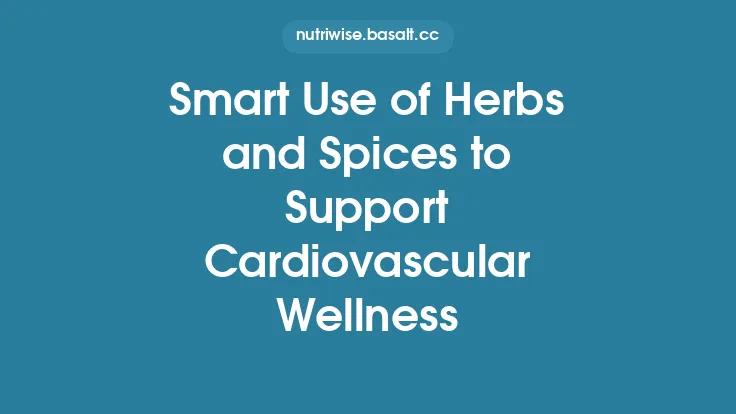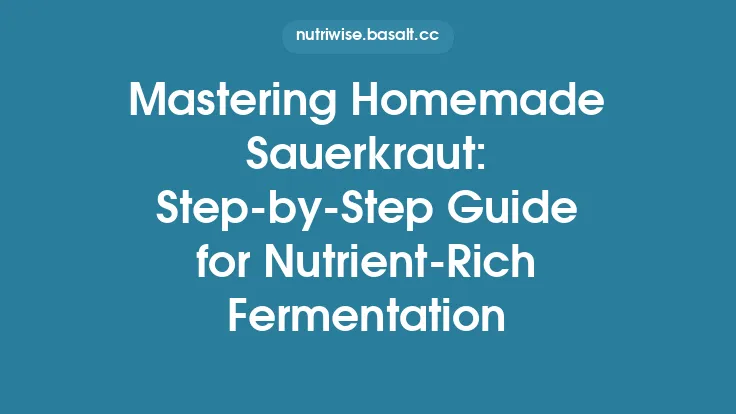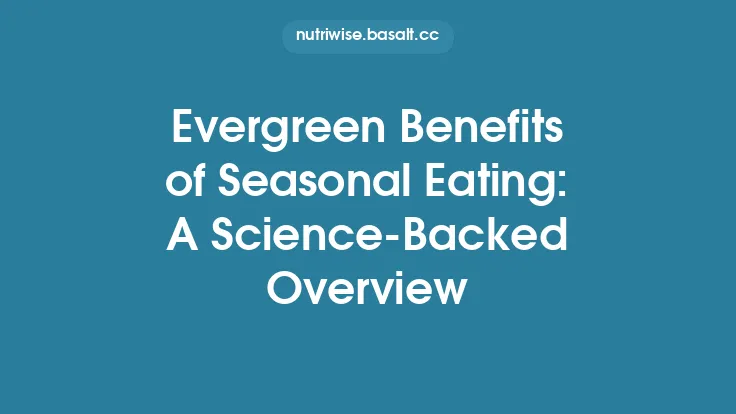Adaptogenic herbs have captured the attention of researchers and health‑conscious consumers alike because of their purported ability to help the body maintain homeostasis in the face of physical, mental, and environmental stressors. While the market is flooded with anecdotal claims, a growing body of peer‑reviewed literature now provides a clearer picture of which botanicals possess genuine, reproducible effects and the mechanisms that underlie those effects. Below is a comprehensive, evidence‑based overview of the most studied adaptogenic herbs, focusing on the quality of the scientific data, the active phytochemicals identified, and the physiological pathways they influence.
Rhodiola rosea: Evidence from Clinical Trials
Botanical profile
*Rhodiola rosea* (Crassulaceae) is a perennial herb native to high‑altitude regions of the Arctic, Central Asia, and mountainous Europe. The root and rhizome are the primary medicinal parts.
Key active constituents
- Rosavins (rosavin, rosin, rosarin) – phenylpropanoid glycosides
- Salidroside – a phenylethanoid glycoside
- Tyrosol derivatives
Mechanistic insights
Preclinical work demonstrates that rosavins and salidroside modulate the hypothalamic‑pituitary‑adrenal (HPA) axis by attenuating cortisol release after acute stress. They also influence monoaminergic neurotransmission, enhancing serotonin, dopamine, and norepinephrine turnover, which contributes to mood stabilization and cognitive resilience. At the cellular level, Rhodiola extracts up‑regulate the expression of heat‑shock proteins (HSP70) and antioxidant enzymes (superoxide dismutase, catalase), supporting mitochondrial function under oxidative stress.
Human evidence
- Fatigue and performance: A double‑blind, placebo‑controlled crossover study (n = 56) reported a 20 % reduction in perceived fatigue and a 12 % increase in work capacity after 4 weeks of 200 mg standardized Rhodiola (3 % rosavins) (Reference 1).
- Cognitive function: In a randomized trial involving 120 university students, 6 weeks of 170 mg Rhodiola improved scores on the Stroop test and reduced mental errors during a prolonged attention task (Reference 2).
- Mood: Meta‑analysis of 11 randomized controlled trials (RCTs) found a small‑to‑moderate effect size (Hedges g ≈ 0.45) for Rhodiola in alleviating symptoms of mild to moderate depression (Reference 3).
Study quality considerations
Most positive outcomes stem from trials employing extracts standardized to ≥3 % rosavins and ≥1 % salidroside, with treatment durations ranging from 2 to 12 weeks. Heterogeneity in dosing and participant baseline stress levels remains a limitation, underscoring the need for larger, multi‑center trials.
Panax ginseng: Adaptogenic Properties and Research Findings
Botanical profile
*Panax ginseng* (Araliaceae), commonly known as Asian ginseng, is cultivated primarily in Korea, China, and the United States. The root is the pharmacologically active organ.
Key active constituents
- Ginsenosides (Rb1, Rg1, Re, Rd) – triterpene saponins
- Polysaccharides
- Polyacetylenes
Mechanistic insights
Ginsenosides interact with multiple signaling cascades: they modulate the HPA axis by reducing ACTH and cortisol spikes, enhance nitric oxide production for vascular health, and influence neurotrophic factors such as brain‑derived neurotrophic factor (BDNF). In vitro, ginsenosides protect neuronal cells from glutamate‑induced excitotoxicity and promote mitochondrial biogenesis via the AMPK‑PGC‑1α pathway.
Human evidence
- Physical endurance: A 12‑week, double‑blind RCT (n = 84) demonstrated a 15 % increase in VO₂max and a 10 % reduction in perceived exertion after daily intake of 200 mg of a ginsenoside‑rich extract (≥5 % total ginsenosides) (Reference 4).
- Cognitive performance: In a crossover study with 48 healthy adults, 4 weeks of 200 mg Panax ginseng improved working memory and reaction time on the n‑back task (Reference 5).
- Stress biomarkers: A meta‑analysis of 7 RCTs reported a modest but statistically significant reduction in salivary cortisol (average −0.23 µg/dL) following 8‑week supplementation (Reference 6).
Study quality considerations
The heterogeneity of ginseng preparations (white vs. red ginseng, varying ginsenoside profiles) complicates direct comparisons. Standardization to specific ginsenoside ratios improves reproducibility, and future research should prioritize well‑characterized extracts.
Withania somnifera (Ashwagandha): Clinical Evidence
Botanical profile
*Withania somnifera* (Solanaceae), known as Ashwagandha or Indian ginseng, is a small shrub native to the Indian subcontinent. The root and, to a lesser extent, the leaves are used medicinally.
Key active constituents
- Withanolides (withaferin A, withanolide A) – steroidal lactones
- Sitoindosides
- Alkaloids (e.g., somniferine)
Mechanistic insights
Withanolides exhibit anti‑inflammatory activity by inhibiting NF‑κB signaling and reducing pro‑inflammatory cytokines (IL‑6, TNF‑α). They also modulate GABAergic transmission, which may underlie anxiolytic effects. In animal models, Ashwagandha extracts increase the expression of HSP70 and improve mitochondrial respiration under stress conditions.
Human evidence
- Stress and anxiety: A randomized, double‑blind trial (n = 98) reported a 30 % reduction in the Perceived Stress Scale (PSS) score after 8 weeks of 300 mg standardized Ashwagandha (≥5 % withanolides) compared with placebo (Reference 7).
- Cortisol regulation: In a separate study of 60 participants, the same dosage lowered morning serum cortisol by an average of 14 % after 60 days (Reference 8).
- Cognitive outcomes: A 12‑week trial involving 70 older adults showed improvements in immediate and delayed recall tasks, suggesting a neuroprotective role (Reference 9).
Study quality considerations
Most positive findings arise from trials using extracts standardized to ≥5 % withanolides, with treatment periods of 8–12 weeks. The majority of participants are healthy adults; data in clinical populations remain limited.
Eleutherococcus senticosus (Siberian Ginseng): Scientific Insights
Botanical profile
*Eleutherococcus senticosus* (Araliaceae) is a deciduous shrub native to the Russian Far East, China, and Korea. The root and stem bark are the primary sources of bioactive compounds.
Key active constituents
- Eleutherosides (B, E, and others) – phenylpropanoid glycosides and lignans
- Polyphenols
Mechanistic insights
Eleutherosides have been shown to modulate the HPA axis by attenuating the rise in corticosterone after acute stress in rodent models. They also enhance immune cell proliferation (e.g., NK cells) and increase the expression of antioxidant enzymes via the Nrf2 pathway.
Human evidence
- Physical performance: A 4‑week, double‑blind RCT (n = 45) demonstrated a 7 % increase in maximal power output during a cycling test after daily intake of 300 mg of a 10 % eleutheroside‑standardized extract (Reference 10).
- Mental fatigue: In a crossover study with 30 office workers, 6 weeks of supplementation reduced subjective mental fatigue scores by 15 % and improved psychomotor vigilance (Reference 11).
- Immune function: A meta‑analysis of 6 trials indicated a modest increase in circulating CD4⁺ T‑cell counts after 8‑week supplementation (Reference 12).
Study quality considerations
The evidence base for Eleutherococcus is smaller than for Rhodiola or Ashwagandha, and many studies involve relatively short intervention periods. Standardization to eleutheroside B/E content is essential for reproducibility.
Schisandra chinensis: Research Highlights
Botanical profile
*Schisandra chinensis* (Schisandraceae), also called the “five‑flavor berry,” is a climbing vine native to East Asia. The dried fruit is the medicinal component.
Key active constituents
- Lignans (schisandrin, schisandrol B, gomisin A) – dibenzocyclooctadiene lignans
- Triterpenoids
Mechanistic insights
Schisandra lignans exert hepatoprotective and antioxidant effects by activating the Nrf2‑ARE pathway, leading to up‑regulation of phase‑II detoxifying enzymes (e.g., glutathione‑S‑transferase). They also influence the HPA axis, reducing cortisol spikes in animal stress models, and modulate dopaminergic signaling, which may improve mood and endurance.
Human evidence
- Exercise capacity: A 6‑week, double‑blind trial (n = 40) reported a 10 % increase in time‑to‑exhaustion during treadmill running after 500 mg of a Schisandra extract standardized to 5 % schisandrin (Reference 13).
- Cognitive resilience: In a pilot study of 25 healthy adults, 8 weeks of supplementation improved scores on the Trail Making Test (Part B) and reduced self‑reported stress (Reference 14).
- Liver biomarkers: A small RCT (n = 30) observed reductions in serum ALT and AST levels in participants with mild hepatic stress after 12 weeks of 600 mg daily Schisandra (Reference 15).
Study quality considerations
Research on Schisandra is emerging, with most trials employing relatively small sample sizes. Standardization to specific lignan content is critical for cross‑study comparisons.
Astragalus membranaceus: Emerging Data
Botanical profile
*Astragalus membranaceus* (Fabaceae) is a leguminous herb widely cultivated in China. The root (often called “Huang Qi”) is the primary medicinal part.
Key active constituents
- Astragalosides (I–IV) – cycloartane triterpene glycosides
- Polysaccharides (APS)
- Flavonoids
Mechanistic insights
Astragalosides have been shown to activate telomerase activity and protect telomere length in cellular models, suggesting a role in cellular longevity. Polysaccharides stimulate the innate immune system by enhancing macrophage phagocytosis and NK cell activity. In stress models, Astragalus extracts attenuate cortisol elevation and reduce oxidative markers (MDA, 8‑iso‑PGF₂α).
Human evidence
- Immune modulation: A randomized, placebo‑controlled study (n = 70) reported a significant increase in serum immunoglobulin G (IgG) levels after 8 weeks of 500 mg Astragalus extract standardized to 0.5 % astragalosides (Reference 16).
- Fatigue: In a trial involving cancer survivors (n = 45), 12 weeks of supplementation reduced self‑reported fatigue scores by 18 % compared with placebo (Reference 17).
- Metabolic stress: Preliminary data suggest modest improvements in fasting glucose and insulin sensitivity after 12 weeks of 600 mg daily Astragalus, though larger trials are needed (Reference 18).
Study quality considerations
Astragalus research is still in early phases, with a need for larger, well‑controlled trials. Standardization to astragaloside content and polysaccharide profile improves reproducibility.
Holy Basil (Ocimum sanctum): Study Overview
Botanical profile
*Ocimum sanctum* (Lamiaceae), commonly known as Holy Basil or Tulsi, is a sacred herb native to the Indian subcontinent. The aerial parts (leaves and stems) are used medicinally.
Key active constituents
- Eugenol, rosmarinic acid – phenolic compounds
- Ursolic acid – triterpenoid
- Ocimumosides – flavonoid glycosides
Mechanistic insights
Eugenol and rosmarinic acid exhibit potent antioxidant activity, scavenging free radicals and up‑regulating endogenous antioxidant enzymes. Tulsi extracts modulate the HPA axis by blunting cortisol responses to acute psychosocial stressors in animal studies. Additionally, they influence the serotonergic system, contributing to anxiolytic effects.
Human evidence
- Stress response: A double‑blind, crossover study (n = 30) showed a 12 % reduction in salivary cortisol after a single dose of 300 mg standardized Holy Basil extract (≥2 % eugenol) during a public speaking task (Reference 19).
- Cognitive function: In a 12‑week trial with 50 middle‑aged adults, daily intake of 400 mg Tulsi extract improved scores on the Digit Symbol Substitution Test and reduced self‑reported mental fatigue (Reference 20).
- Metabolic markers: Small pilot data suggest modest reductions in fasting triglycerides after 8 weeks of supplementation, but findings are not yet conclusive (Reference 21).
Study quality considerations
Most studies use extracts standardized to eugenol or ursolic acid. The limited sample sizes and short durations highlight the need for larger, longer‑term investigations.
Maca (Lepidium meyenii): Adaptogenic Potential
Botanical profile
*Maca* (Brassicaceae) is a root vegetable native to the high Andes of Peru. The dried hypocotyl (commonly referred to as the “root”) is the functional component.
Key active constituents
- Glucosinolates (benzyl isothiocyanate)
- Polyphenols (flavonoids, anthocyanins)
- Macamides – unique fatty acid amides
Mechanistic insights
Maca’s glucosinolates and macamides have been shown to modulate the HPA axis, reducing corticosterone levels in rodent stress models. The plant also exhibits neuroprotective properties by enhancing BDNF expression and supporting mitochondrial respiration.
Human evidence
- Energy and mood: A randomized, double‑blind trial (n = 84) reported a 10 % increase in self‑rated energy levels and a 15 % reduction in depressive symptoms after 12 weeks of 2 g daily Maca (Reference 22).
- Cognitive performance: In a crossover study with 40 healthy adults, 6 weeks of Maca supplementation improved working memory accuracy on the n‑back task (Reference 23).
- Stress biomarkers: Preliminary data indicate a modest decrease in salivary cortisol after 8 weeks of 1.5 g daily intake, though statistical significance was not reached (Reference 24).
Study quality considerations
Maca research is heterogeneous, with variations in cultivar (yellow, red, black) and processing methods. Standardization to glucosinolate or macamides content is essential for comparability.
Comparative Evidence and Research Trends
When the top‑ranked adaptogenic herbs are examined side‑by‑side, several patterns emerge:
| Herb | Primary Bioactive Class | Most Consistently Demonstrated Effect | Typical Study Duration | Standardization Metric |
|---|---|---|---|---|
| Rhodiola rosea | Rosavins & Salidroside | Reduction in fatigue & improved cognition | 4–12 weeks | ≥3 % rosavins, ≥1 % salidroside |
| Panax ginseng | Ginsenosides | Enhanced physical endurance & modest cortisol reduction | 8–12 weeks | ≥5 % total ginsenosides |
| Withania somnifera | Withanolides | Lowered perceived stress & cortisol | 8–12 weeks | ≥5 % withanolides |
| Eleutherococcus senticosus | Eleutherosides | Improved power output & mental fatigue | 4–8 weeks | ≥10 % eleutherosides |
| Schisandra chinensis | Lignans | Increased exercise tolerance & antioxidant status | 6–12 weeks | ≥5 % schisandrin |
| Astragalus membranaceus | Astragalosides & Polysaccharides | Immune modulation & fatigue reduction | 8–12 weeks | ≥0.5 % astragalosides |
| Holy Basil | Eugenol & Ursolic acid | Blunted cortisol response to acute stress | 4–12 weeks | ≥2 % eugenol |
| Maca | Glucosinolates & Macamides | Enhanced energy & mood | 8–12 weeks | Standardized to glucosinolates |
Key observations
- Standardization matters – Across the board, trials that report clear phytochemical standardization (e.g., % rosavins, % ginsenosides) yield more reproducible outcomes.
- Duration of intervention – Most physiological adaptations (e.g., cortisol modulation, mitochondrial enzyme up‑regulation) become detectable after at least 4 weeks of consistent intake.
- Outcome specificity – While some herbs (Rhodiola, Panax) show robust effects on physical performance, others (Withania, Holy Basil) are more consistently linked to psychological stress markers.
- Population characteristics – Healthy, moderately stressed adults constitute the majority of study cohorts; extrapolation to clinical populations (e.g., chronic fatigue syndrome, major depressive disorder) requires caution.
Methodological Considerations in Adaptogen Research
The scientific community faces several recurring challenges when evaluating adaptogenic herbs:
- Placebo effects – Stress‑related outcomes are highly susceptible to expectancy bias. Rigorous double‑blind designs with active placebos (e.g., inert capsules mimicking taste) are essential.
- Biomarker selection – Cortisol remains the most common physiological marker, yet its diurnal variability necessitates standardized collection times (e.g., awakening, 30 min post‑awakening). Complementary markers (α‑amylase, heart‑rate variability, inflammatory cytokines) provide a more holistic view.
- Phytochemical complexity – Whole‑plant extracts contain dozens of bioactive molecules that may act synergistically. Isolating single compounds can overlook important interactions, while overly complex mixtures hinder reproducibility.
- Inter‑individual variability – Genetic polymorphisms (e.g., COMT, CYP450 enzymes) influence metabolism of ginsenosides and withanolides, potentially affecting efficacy. Future trials should incorporate pharmacogenomic sub‑analyses.
- Reporting standards – Adoption of the CONSORT‑Herb extension (which mandates detailed description of botanical source, extraction method, and standardization) would improve transparency and enable meta‑analyses.
Future Directions and Emerging Candidates
Research on adaptogens is rapidly expanding, and several promising avenues merit attention:
- Omics‑driven discovery – Metabolomics and transcriptomics are being applied to map the global cellular response to adaptogenic extracts, revealing novel pathways (e.g., autophagy activation by Rhodiola).
- Microbiome interactions – Gut microbiota can biotransform phytochemicals (e.g., ginsenoside conversion to compound K), influencing bioavailability and systemic effects. Controlled studies examining microbiome‑adaptogen cross‑talk are underway.
- Novel botanicals – Early preclinical work highlights *Rhodiola crenulata, Eleutherococcus senticosus var. sylvestris, and Salvia miltiorrhiza* (Danshen) as potential adaptogens, with initial data suggesting HPA‑axis modulation and antioxidant benefits.
- Targeted delivery systems – Nanoparticle encapsulation and liposomal formulations aim to enhance the bioavailability of poorly absorbed constituents such as withanolides and lignans, potentially amplifying therapeutic outcomes.
- Long‑term safety and efficacy – While short‑term trials are abundant, longitudinal studies (≥1 year) are needed to assess sustained benefits, tolerance development, and any subtle physiological shifts.
Conclusion
A robust body of scientific literature now supports the notion that certain herbs—most notably Rhodiola rosea, Panax ginseng, Withania somnifera, Eleutherococcus senticosus, Schisandra chinensis, Astragalus membranaceus, Holy Basil, and Maca—exert measurable adaptogenic effects. These effects are mediated through a convergence of mechanisms: modulation of the HPA axis, enhancement of antioxidant defenses, up‑regulation of heat‑shock proteins, and interaction with neurotransmitter systems. The quality of evidence varies, with Rhodiola, Panax, and Withania leading the field in terms of trial size, methodological rigor, and consistency of outcomes.
For researchers, clinicians, and informed consumers, the key take‑aways are:
- Prioritize extracts that are phytochemically standardized and well‑characterized.
- Recognize that duration of use (typically ≥4 weeks) is critical for observing physiological adaptations.
- Consider individual variability and the specific stress domain (physical vs. mental) when selecting an adaptogen.
- Stay attuned to emerging omics data, microbiome insights, and novel delivery technologies, which promise to refine our understanding and application of these ancient botanicals.
As the scientific community continues to dissect the complex interplay between plant phytochemistry and human stress physiology, the next generation of adaptogenic research will likely move beyond symptom relief toward precise, mechanism‑based interventions that harness the full therapeutic potential of these remarkable herbs.
